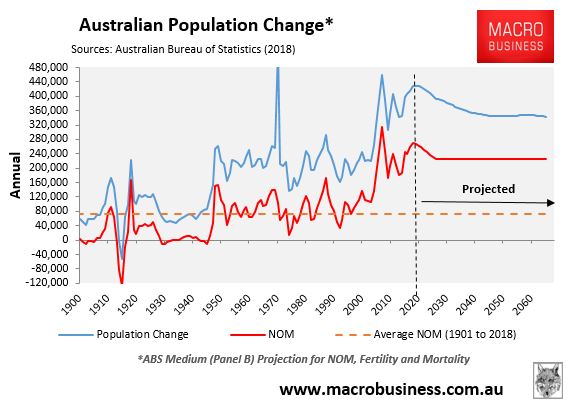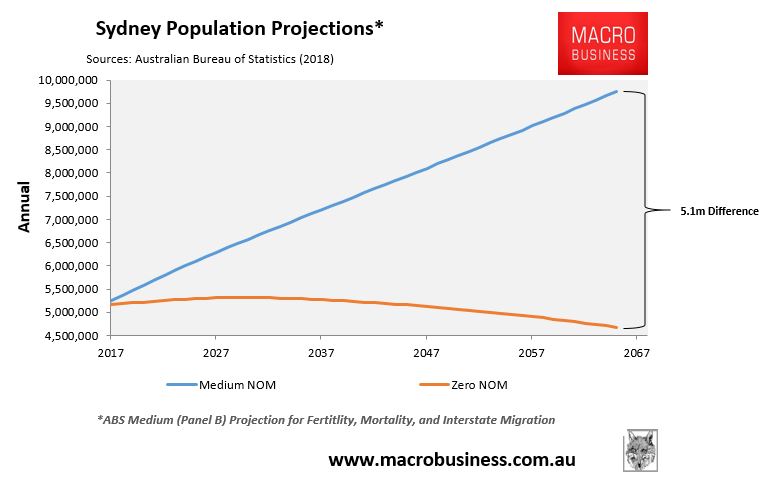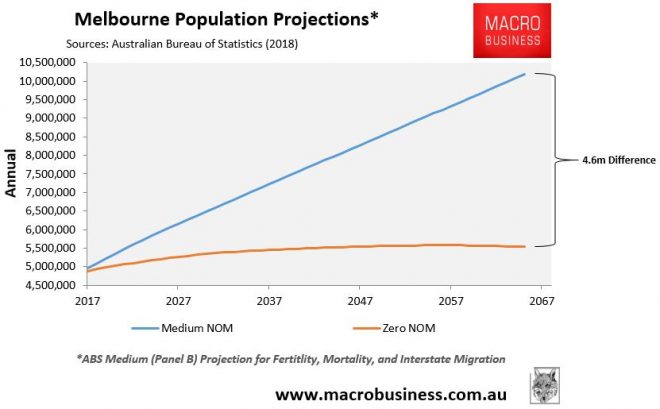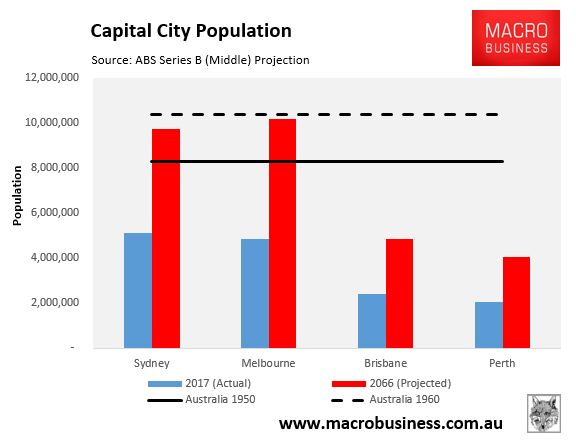Former editor of the Canberra Times, Crispin Hull, has continued his herculean battle against the ‘Big Australia’ mass immigration policy, penning the following demolition of the Coalition’s fake immigration cuts:
[Morrison] announced that net immigration will be capped at 160,000 a year for the next four years. Previously it was nominally 190,000, but even so it was only a tad over 160,000 last year anyway.
So there is really no change from the short-term growth mania that profits the big end of town who are all donors to major parties, particularly the Coalition.
But so close to the election we have to have an annouceable that something is being done about congestion…This is the great ebb and flow of Australian politics. Promise what the people really want in the weeks leading up to an election in the most imprecise but expansive terms possible and afterwards just pander to the big-growth donors.
The Coalition’s so-called population policy has no chance of reducing congestion or infrastructure shortages.
While fish are dying in Murray-Darling and we are facing droughts, floods, under-employment, unemployment, homelessness, housing shortages, crowded schools and hospital waiting lists, the message should be that Australia is full.
Now is precisely the wrong time to lock in four years of 160,000 net immigration – that is 640,000 people or one and a half Canberras.
Canberra has struggled just to build just one short track of light rail over the past decade. Its schools and hospitals struggle, yet it is considered among the nation’s best.
The infrastructure maths, like exponential growth, is little understood.
But look at it this way. Given the average piece of infrastructure – road, hospital, signpost, fence etc – lasts about 50 years, you have to spend 2 per cent of the nation’s capital every year just to keep up existing infrastructure. But if you increase the population by 2 per cent a year, you have to add another 2 per cent of the nation’s annual capital expenditure just to keep the same amount of infrastructure per head.
In short, a 2 per cent population increase, which Morrison has more or less locked us in to, means we have to double our infrastructure spending each year. But we are not. That is why people are rightly upset…
Australia is but a small example of the global population problem. Globally and nationally we must do whatever we can to control the exponential growth in population before it controls us.
Morrison’s “population policy” is far too little for too short a time.
Australia is full. Like most other countries we should not have an economic immigration policy, just a humanitarian one. Clearly the economic program has not helped the vast majority of Australians over the past decade or more.
Further, the population growth, even under this week’s announcement, understates the true position. We have to add the 30,000 illegal immigrants a year who come in by air.
Unlike boat people, more than 95 per cent of whom had a legitimate claim of persecution, those who come in by air have no claim. They are coming with the illegal intention of overstaying. But they do not make dramatic media footage so can be safely ignored…
So let’s remove race from the population and immigration question and concentrate on the environment and the living amenity of the people already living here.
If we did that we would have a sensible population policy not, as we have now, the irrational immigration policy based on bringing in as many consumers and low cost employees as possible for the profit of the big end of town.
Let’s remember that under the ABS’ medium population projections, Australia’s population is projected to balloon to nearly 43 million people by 2066 and will continue to grow thereafter, so long as mass immigration is maintained:

Whereas Sydney’s and Melbourne’s populations will roughly double to around 10 million people each by 2066:


This volume of population growth needs to be put into context:
- It took Sydney roughly 210 years to reach a population of 3.9 million in 2001. Yet the official medium projection by the ABS has Sydney adding roughly 2.5 times that number of people again in only 65 years.
- It took Melbourne nearly 170 years to reach a population of 3.3 million in 2001. However, the official medium ABS projection has Melbourne’s population tripling that number in only 65 years.
In 2066, Sydney’s (9.7 million) and Melbourne’s (10.2 million) populations are projected by the ABS to be significantly larger than Australia’s population in 1950 (8.3 million) and only slightly below Australia’s population in 1960 (10.4 million):

No wonder individual living standards are being eroded through rising congestion costs, declining housing affordability, paying more for infrastructure (e.g. toll roads and water), environmental degradation, and overall reduced amenity.
Anyone who thinks this volume of growth is sustainable and desirable clearly has rocks in their head.

